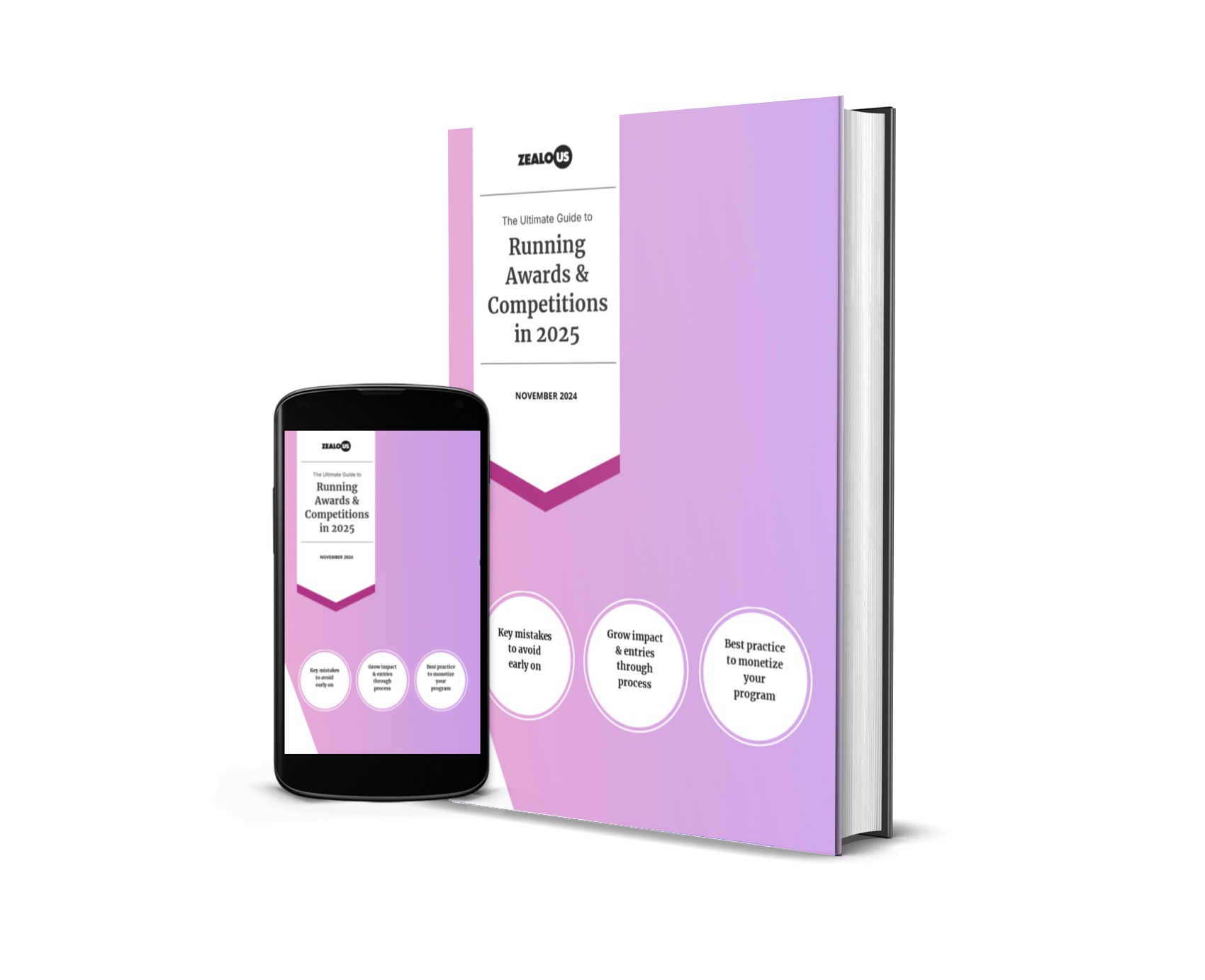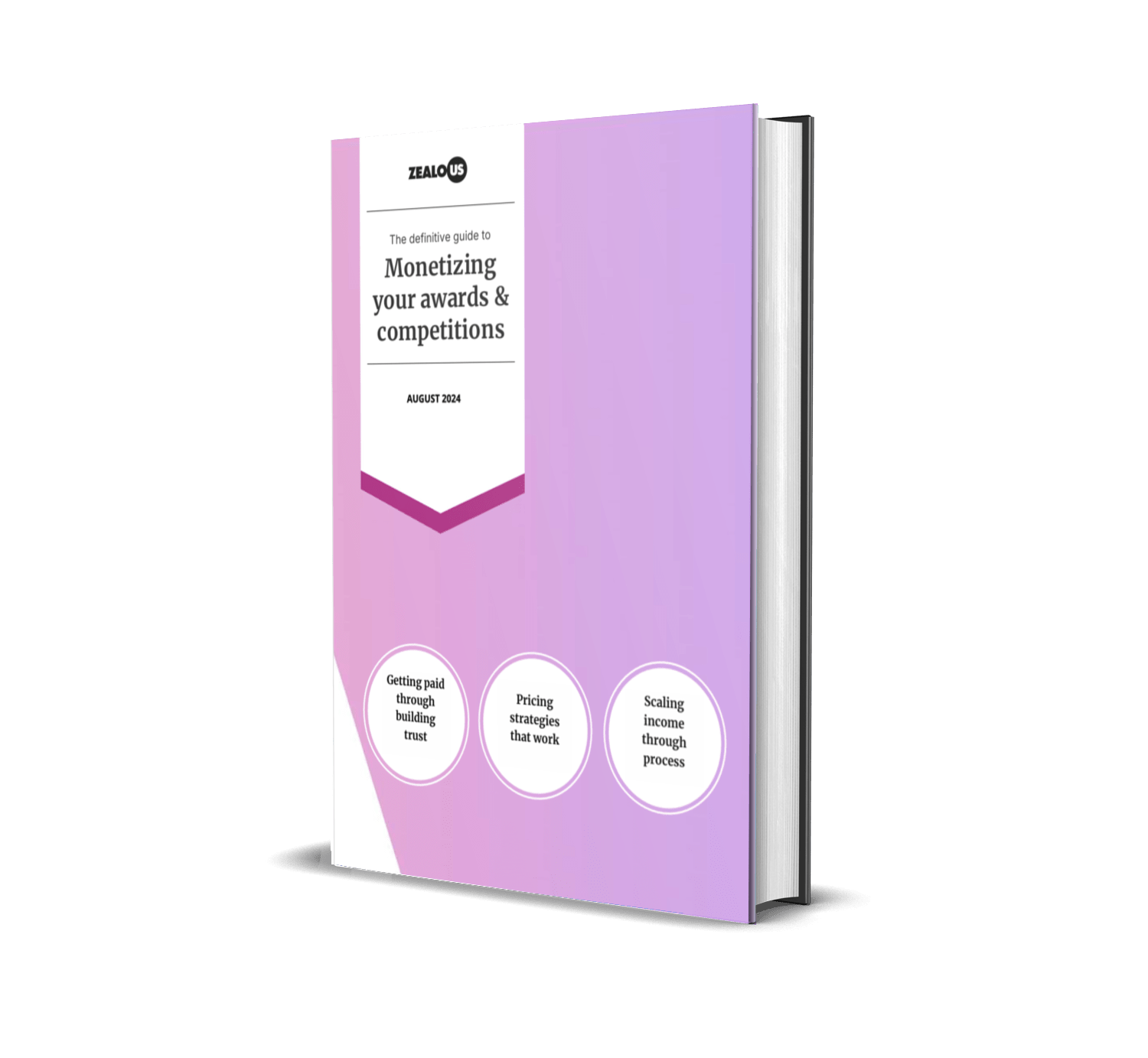A lack of information could lead to submissions containing irrelevant content. Too much information and potential entrants may avoid reading them, or worst still, be put off from applying altogether.
This article covers:
- How to entice candidates to submit with quality content.
- Acquiring the best entries by making your requirements clear.
- What to include in your guidelines.
- Best practises for formatting your guidelines.
- How to avoid answering reams of enquiries from confused candidates.
Tell a story
Ever read the entire manual for one of your appliances? If you did, you’re a better person than I am!
Manuals are filled with information but are usually so bland that we banish them to the bottom of the drawer.
Be mindful of this when writing your guidelines. Instead of focussing solely on information (like a manual), tell your candidates a story.
Use accessible language and anticipate potential questions and the order they may ask them. Doing so will improve engagement and ensure candidates are not overwhelmed by a wall of text.
Start with a short pitch of your opportunity to entice candidates to read on. Clarify eligibility (this saves ineligible candidates time, allowing them to drop off early).
Share details the candidates would care about the most:
- What do they stand to achieve from winning the competition?
- How much effort is required from the application process?
- Are there any supporting materials and terms worth looking at?
The building blocks of your story should follow the structure below.
Why
- Short pitch
- Who can take part
- Why they should submit
How
- Costs (optional)
- Timelines
- What to submit
- Selection criteria
- FAQ (optional)
- How to submit
What
- Who you are
- Supporting materials / T&Cs (links)
Fostering diversity & inclusion
The more accessible your language, the more likely you will attract a diverse audience to your competition.
Getting the short pitch right
A short pitch should be a paragraph at most. It is how you would define your competition to someone with 20 seconds to spare.
Ideally, it will cover the 3-4 most important elements the competition offers, such as:
- What type of project it is (competition, award, residency, etc).
- Where it is (global, country, region, city, etc).
- Who it is for (artists, filmmakers, writers, etc).
- The main benefit of submitting (money, prize, judges worth highlighting, etc).
Here are some examples of how this could look:
- Our annual awards celebrate the United Kingdom’s top emerging creative talent from across the industry with £12,000 worth of prizes.
- Win a £100,000 grant aimed at UK-based funded arts organisations who have demonstrated creativity supporting their communities.
- Have a chance to win an artist residency based in Lagos (Nigeria) founded by Yinka Shonibare.
Fostering diversity & inclusion
Including an element in the short pitch aimed towards specific communities will make them feel included and want to submit (e.g. a judge who reflects their background).
Keep language short, simple and clear
When you write your guidelines, remember to aim them at a reader who has no existing awareness of the competition and avoid any inaccessible language and assumed knowledge.
(Much like this passage, keep things short and sweet!)
Fostering diversity & inclusion
Having complex flowery language will lead to indirectly excluding sections of society. Using simplified language will allow everyone to feel included (e.g. people who have learnt English as a second language).
A video paints a million pictures
Videos could make a real difference to some of your candidates.
The digital world is finally waking up to the varied needs of those using the web.
There are millions of ways of thinking and interacting with content based on an individual’s needs. For neurodivergence applicants, or those with disabilities or accessibility needs a video can offer an alternative way to offer clarity.
Providing alternatives to written guidelines could also help candidates who struggle with the written word as their primary medium of receiving and processing information.
Fostering diversity & inclusion
Celebrate a richer subsection of society. Create multiple formats of your guidelines that suit different candidates.
Be as brief as possible
It’s easy to mistake clarity for length. The truth is, the longer your guidelines are, the less likely candidates are to read them.
Once you are happy with your drafted guidelines, review them intensley and remove as much irrelevant content as possible (without losing their meaning and feeling).
Reducing your content to the bare minimum will pay off. It will lower the barrier to entry for candidates, lead to more submissions and ensure they submit the required information.
It also shows empathy. Saving 288 candidates 5 minutes of reading will unlock a full day of work between them. Imagine how much more they could create with that time.
Fostering diversity & inclusion
Making every word count reduces friction with those who struggle with long passages; and saves time for candidates using screen readers.
Good formatting = clear understanding
Placing all your guidelines into a single wall of text can be a real turn off.
The format of your guidelines is as important as the content.
With this in mind, it can be a good idea to separate individual sections with short titles and highlight important text by making it bold. Doing so allows candidates to refer to specific elements in your guidelines as they apply.
This is especially important if you have a complex application process.
Formatting best practises include:
- Separate main sections with big titles.
- Highlight subsections with headers.
- All other content should be the same sized font.
- Split content into paragraphs (ideally 4-5 lines max).
- Any information you wish to highlight should be bold (use this sparingly).
- Use bullet points when listing content (like this)!
- Can you boil down the main guidelines into links to external content? e.g. supporting material, terms etc.
Fostering diversity & inclusion
Spacing out elements and giving them a structure can help candidates with dyslexia.
Context is key
Editing tools like Word and Grammarly are great for writing guidelines, catching typos and revising grammatical errors. However, when you copy and paste these guidelines into your submissions management platform of choice, there’s a chance you may notice duplicate information on the page.
Be sure to trim any duplicated information from your guidelines on the platform.
For example, including dates in your guidelines and the submissions platform displaying them on the same page can create ambiguity should you decide to extend your deadline. Candidates will get confused if both dates contradict each other. To make your life easier, remove as much duplicate information as possible from your guidelines.
The guidelines on your site and those on your submissions management platform are likely to be slightly different (one being the subset of another).
It is also worth checking your guidelines use the same language as the site you are taking submissions on. Using the same terminology will reduce enquiries from applicants (e.g. is the final confirmation button labelled as “Apply”, “Submit” or something else)?
Fostering diversity & inclusion
Ambiguity and contradictions in guidelines will lead to individuals who are short on time giving up on submitting.
Review, review, review!
Making the content and language accessible to your candidates is vital.
Once you have written your first set of guidelines, be sure to re-read them a couple of times and make improvements.
Once you are ready, test out a submission to see how candidates will experience the whole process from the moment they land on your competition to the moment they have completed their application.
Ideally (if you can), have an external party test your submission process and provide you with feedback.
Fostering diversity & inclusion
If you wish to serve a community with specific needs, try and involve them early to test your process before you open submissions. e.g. if you want to engage with blind writers, get someone with a screen reader to apply once you are ready (and reward them for their time)!
Evolve
Writing good guidelines from scratch is hard. You can never really know where your candidates are going to stumble.
The good news is that nothing stops you from improving them as you go, even whilst submissions are open.
Check submissions coming in at the start to ensure they contain what you expect. If they don’t, edit your guidelines to catch issues early.
Make it easy for applicants to contact you. Getting their feedback will allow you to improve your process and guidelines as you go.
If candidates continuously ask you the same questions. Add an FAQ section to your guidelines and answer the question there for future candidates.
Fostering diversity & inclusion
It is impossible to view the world through everyone’s eyes. But allowing them to contact you directly will allow you to improve your process for those that may feel left out.
Conclusion
The title of this article is purposefully contentious – your guidelines will never be perfect, but that doesn’t mean they won’t be fantastic!
Knowing you will never reach perfection is critical in understanding there is always room for improvement.
Copying and pasting last year’s guidelines or pasting the same ones in different places without questioning them will lead to issues down the line.
Asking yourself the critical questions above will go a long way in improving your candidates’ journey and guaranteeing you receive great entries. Getting candidates to submit the correct entry the first-time round will save you both time dealing with those oversights.
And remember, evolving your guidelines to make them as clear as possible before the last-minute rush will save you a whole lot of time and money and help to avoid headaches. No one likes getting swamped with queries at the eleventh hour (especially if the eleventh hour is Friday at 17:00)!
Let us know you want us to write more content like this with a love!
Share

Guy Armitage is the founder of Zealous and author of “Everyone is Creative“. He is on a mission to amplify the world’s creative potential.




